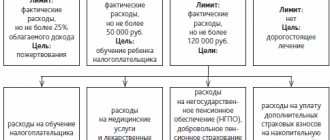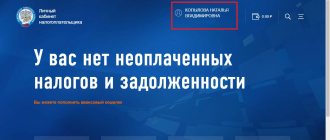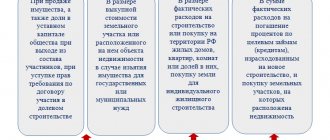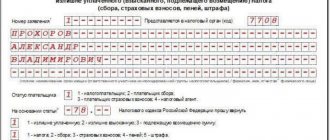List of expensive treatments to receive a deduction
The legislation defines what constitutes expensive treatment for tax deduction.
The government has developed a list of types of assistance that are considered expensive. Both medical institutions and tax inspectors are guided by it. The general list of expensive types of treatment for obtaining a tax deduction is prescribed in Resolution 201 of March 19, 2001. The registry used includes some surgical operations and certain therapies, transplantations and implantations. It is not necessary to thoroughly understand what kind of treatment is considered expensive for a tax refund. Just look at the certificate issued for the Federal Tax Service. If the service code is designated as 2, the treatment is considered expensive. Then a deduction can be claimed from the entire payment amount. Coding 1 is assigned to routine medical care.
Treatment costs - what are they?
Not all expenses related to illness or injury will be taken into account when calculating your tax refund as medical expenses. These will include:
- Medical services included in a special list.
- Medicines and medicines used by the patient, for which it is possible to receive a refund, must also be included in a special list.
- Contributions to pay for voluntary health insurance contracts are also treatment expenses.
The list of medical services for which you can receive a tax deduction is quite wide. In short, it includes:
- therapeutic (for systemic connective tissue diseases);
- surgical (including endoprosthetics);
- dental (operations for congenital malformations);
- consulting services;
- diagnostic (including laboratory tests for coagulation system disorders);
- rehabilitation costs (for example, for burns);
- ECO.
The most detailed list of medical care, as well as medications for which you can receive a social tax deduction, can be found here.
Income tax refunds for each type are calculated separately, so costs are not cumulative. For a detailed scheme for returning personal income tax for regular treatment, see the article: “How to return 13 percent after paying for treatment.”
Here we briefly note that for ordinary treatment expenses there is a limit on the maximum amount from which the refund is calculated: 120 thousand rubles. There is no such restriction for expensive treatment. Therefore, you can return 13% of the full payment amount. But this does not always happen, and this will be discussed below.
You can watch this video tutorial or continue reading the article.
(as of January 1, 2021)
- Surgical treatment of congenital anomalies (developmental defects).
- Surgical treatment of severe forms of circulatory system diseases, including operations using artificial blood circulation machines, laser technologies and coronary angiography.
- Surgical treatment of severe forms of respiratory diseases.
- Surgical treatment of severe forms of diseases and combined pathologies of the eye and its appendages, including the use of endolaser technologies.
- Surgical treatment of severe forms of nervous system diseases, including microneurosurgical and endovasal interventions.
- Surgical treatment of complicated forms of diseases of the digestive system.
- Endoprosthetics and reconstructive operations on joints.
- Transplantation of organs (complex of organs), tissues and bone marrow.
- Replantation, implantation of prostheses, metal structures, pacemakers and electrodes.
- Reconstructive, plastic and reconstructive plastic surgeries.
- Therapeutic treatment of chromosomal disorders and hereditary diseases.
- Therapeutic treatment of malignant neoplasms of the thyroid gland and other endocrine glands, including the use of proton therapy.
- Therapeutic treatment of acute inflammatory polyneuropathies and complications of myasthenia gravis.
- Therapeutic treatment of systemic connective tissue lesions.
- Therapeutic treatment of severe forms of diseases of the circulatory, respiratory and digestive organs in children.
- Combined treatment of pancreatic diseases.
- Combined treatment of malignant neoplasms.
- Combined treatment of hereditary bleeding disorders and aplastic anemia.
- Combined treatment of osteomyelitis.
- Combined treatment of conditions associated with complicated pregnancy, childbirth and the postpartum period.
- Combined treatment of complicated forms of diabetes mellitus.
- Combined treatment of hereditary diseases.
- Combined treatment of severe forms of diseases and combined pathologies of the eye and its adnexa.
- Complex treatment of burns with a body surface area of 30 percent or more.
- Types of treatment associated with the use of hemo- and peritoneal dialysis.
- Nursing premature babies weighing up to 1.5 kg.
- Treatment of infertility using in vitro fertilization, cultivation and intrauterine embryo insertion.
Expensive treatment: list of documents for obtaining a deduction
To apply for compensation, you need to prepare the following documents:
- certificate of payment for services with code 2;
- an agreement with a medical institution or an individual entrepreneur engaged in medical activities.
If the contract does not indicate a Russian license, a copy of it must be attached to the documents. Otherwise, a refund will be refused.
- 2-NDFL certificate provided by the employer;
- application for a deduction.
Additional supporting documents may be needed if it is not the patient himself, but a member of his family who declares to receive the funds.
Expensive treatment list for 3 personal income taxes: who can receive a deduction
The deduction for expensive treatment is allowed not only to the citizen being treated, but also to his family members who paid for the services provided:
- spouse;
- children;
- parents, if children are under 18 years old;
- guardians of minors.
An agreement with a medical institution is most often concluded in the name of the patient, however, in the certificate of payment for services, the payer indicates the person who actually paid the organization. It is this person who receives the right to deduction. This rule does not apply to spouses who are officially married - it does not matter to them who was the payer.
To receive a social deduction, a copy of a document confirming a close relationship is attached to the prepared package.
In order to receive a refund, spouses can divide the entire amount of payment in proportions favorable to themselves by drawing up an additional application for the distribution of shares. Then one of them, along with the application, gives the original certificate to the Federal Tax Service, the second - its copy.
What you need to do to get your tax refund
Social deduction for expensive treatment is a targeted expense on which personal income tax is not charged. If a person has already transferred tax to the budget, the excess will be returned. The actual benefit from applying the deduction is 13% of the costs incurred.
In message dated January 29, 2018 No. 03-04-05/4878, the Ministry of Finance comments on the provisions of paragraphs. 3 p. 1 art. 219 of the Tax Code and explains who has the right to apply for a tax deduction for expensive and routine treatment. So, personal income tax will be returned to the taxpayer who:
- pays 13% personal income tax on his income;
- is treated in a clinic or by an individual entrepreneur who has a Russian medical license. activity;
- pays himself, not at the expense of third parties;
- has supporting documents (we will discuss them below).
Important! Only the year in which honey is taken into account is taken into account. services were paid. It is impossible, for example, to perform an operation in 2021, and receive a deduction from income for 2015. The Ministry of Finance once again reminds of this in a letter from
20.03.2018 № 03-04-05/17128
.
Example 2
Arthur’s official salary is 97,200 rubles. in a year. In 2021, Arthur needed an expensive paid operation, which cost him 214,100 rubles. The law allows you to return 13% - 27,833 rubles.
In 2021, the young man applied to the Federal Tax Service and received only 12,636 rubles. - Personal income tax received from his income for the past year. Arthur has not officially earned any more money, and the state has nothing to return to him.
Clause 2 art. 219 of the Tax Code allows you to apply for a tax deduction for expensive treatment in 2021 in two ways:
- Submit a declaration to the Federal Tax Service. Reporting is allowed for 3 years. It will not be possible to reimburse expenses for 2021 until 2021.
- Write a statement to the employer. Based on a notification from the Federal Tax Service, it stops deducting personal income tax from the salary and the employee receives 13% more every month. The method is valid strictly within the year in which the payment was made.
A tax refund will be received if:
- You worked officially during the period in which the treatment was provided.
- The treatments were received by your children under 18 years of age, your parents, your spouse, or yourself.
- Medical procedures were paid.
- Treatment is included in the list of services determined by the government.
- The medical institution where the treatment was provided is licensed.
We suggest you read: Errors in invoices for transactions with prepayment - SKB Kontur
As you can see, there are quite a lot of conditions. But in fact, 80-90% of citizens of the Russian Federation can easily use their right to completely legally return at least a small part of the money spent.
The amount that can be claimed after receiving expensive treatment is calculated as 13% of the amount of all medical expenses included in the list. However, there are restrictions on the amount of payments:
- The maximum amount from which the deduction is calculated should not exceed the annual salary. That is, the refund should not exceed the amount of taxes paid for this year.
- It is not possible to transfer the tax deduction for treatment to another period.
If the amount of medical expenses exceeds the annual salary, then in this case you can also receive it.
To do this, you need to distribute all expenses among relatives who will receive a deduction (children, spouse). This must be done so that everyone has a complete package of documents, and the amount to be returned does not exceed the limits of each of them.
It is important to issue certificates separately for each applicant, in accordance with the amount of expenses for each of them.
In order to return the money spent on treatment, you need to complete the following steps:
- Collect documents confirming identity, payment of taxes, fact and validity of expenses for treatment, relationship (if necessary).
- Fill out the standard 3-NDFL declaration.
- Provide them in person (or send them by mail with a valuable letter with an inventory) to the tax office at your place of registration.
- Open an account for transferring funds by bank transfer (you can use an existing one).
- Write a return request.
It should be noted that from 2021, the income tax refund procedure has been supplemented by the opportunity to receive a tax deduction directly at work. In this case, you will not receive a specific amount in your hands; personal income tax will simply not be deducted from your salary for a certain time. Read more about the procedure for returning through an employer, its pros and cons, in this article.
How much money can you get after expensive treatment?
Since the maximum amount for expensive treatment is not limited, you can get money back from the entire deposited amount. But they return what was not spent, and no more than 13% of the payment for medical care. The withheld tax on taxable income for this calendar year is taken into account:
- if the personal income tax on the salary is higher, 13% of the paid services will be returned in full;
- if the income tax is less, the amount withheld by the employer is returned.
People who did not have taxable income for the year will receive nothing back.
Calculation examples
To make the refund procedure clearer, we give examples of calculations.
When treatment costs are less than income received
Salary Nikolaev N.A. for the year amounted to 600,000 rubles. The employer withheld income tax from his salary of 78,000 rubles. For dental implantation Nikolaev N.A. paid 240,000 rubles. Let's calculate how much money Nikolaev will receive back from the Federal Tax Service.
Let's find 13% of the cost of dental services: 240,000 x 13% = 31,200 rubles.
Since the tax withheld by the employer is higher (78,000>31,200), Nikolaev will be refunded 31,200 rubles from the cost of treatment.
Treatment expenses exceed accrued salary
During the year, Petrov earned 300,000 rubles. The accounting department withheld tax from him upon payment of 39,000 rubles. He spent 400,000 rubles on expensive treatment. How much money can Petrov return?
13% of the payment for treatment will be 400,000 x 13% = 52,000 rubles.
However, the withheld tax on income is less (39,000<52,000), so only 39,000 rubles will be transferred to Petrov from the tax office.
How to get money back for treatment if the return is greater than the maximum
When the refund exceeds the assessed tax, the tax office does not return the money. There are other ways to solve the problem: transfer the deduction in whole or in part to a close relative who has the right to compensation. Funds for a medical institution or individual entrepreneur engaged in medical activities can be contributed by different payers - for example, spouses. Then each of them can claim a deduction. There are no legal restrictions on such actions.
Treatment deductions are not transferred to another calendar year. Refunds must be claimed no later than 3 years after payment.
Who is entitled to a deduction for treatment?
The category of citizens entitled to receive monetary compensation for treatment has the following list of characteristics.
- If the citizen continued to work while receiving treatment.
- If medical services were provided: to you;
- your parents;
- husband;
- wife;
- minor children.
You can get a tax deduction for your first-degree relatives
As you can see, there are many criteria that must be met in order to receive money, but many eligible applicants are not even aware of their right to compensation. Of course, 13% is a small part of the funds paid, but even their return can play a significant role for the well-being of the patient.
The procedure for obtaining a deduction - step-by-step instructions
You can receive a refund in 2 different ways:
- at the employer;
- to the Federal Tax Service.
Let's consider each of the options.
Receiving a deduction from the employer
To receive compensation at work, you must:
- Prepare treatment documents.
- Make copies.
- Write an application for a deduction indicating the name of the employer from whom you plan to receive the deduction; hand it over to the tax authorities.
- After 30 days, receive a notification from the Federal Tax Service.
- Write a deduction application addressed to the manager.
- Take both documents to the employer's accounting department.
After the transfer of papers, taxes will no longer be withheld from wages. Earnings are paid in full until the amount specified in the notice is reimbursed or until the end of the year.
Receiving a refund from the Federal Tax Service
To receive the entire amount in one payment, it is better to contact the tax authorities. To do this after the new year:
- Prepare documents for payment for treatment and make copies of them.
- Take 2-NDFL certificates from places of work for the past period;
- Fill out the 3-NDFL declaration.
- Submit an application for deduction.
- Attach an application for the return of funds indicating the amount, BCC, OKATO (this information is in the declaration) and the recipient’s bank details.
The Federal Tax Service returns funds only to the declarant himself. Money is not transferred to third party bank details.
The desk audit lasts no more than 3 months, another 30 days are allocated for transfer. A person must receive the declared amount no later than 4 months from the date of filing the declaration.
Registration procedure
The first two paragraphs of paragraph 2 of Article No. 219 of the Tax Code of the Russian Federation regulate the right and procedure for obtaining a tax discount for treatment from an employer or directly from a fiscal authority.
The option with an executive service is not only more convenient, but also profitable.
Let's look at why:
- In order to receive refundable funds from the employer, you will need to request the relevant document from the tax service, and this costs personal time.
- Bite correction is divided into periods, so it is easier to wait until the end of treatment and collect the entire list of necessary documentation at once.
The tax authority may accept the income statement for the last 36 months, and the employer calculates the tax within the calendar year.
In order to receive personal income tax compensation for bite correction with braces, it is important to comply with a number of conditions, namely:
- The hospital where the treatment was carried out provides medical services to the population on the basis of a license from the Russian Federation.
- An individual who expects to pay a deduction receives official earnings from an enterprise or has other income subject to personal income tax in the year in which the payment for the correction was made.
- The taxpayer receiving the deduction paid in full for the installation of the corrective structure and additional medical care for himself or one close relative.
Worth knowing! The amount of deduction for a taxpayer cannot exceed the amount of his profit for the previous reporting year. To put it differently, a citizen can only count on the personal income tax that he contributed to the state treasury.
List of documents
In order to apply for and subsequently receive compensation for orthodontic treatment, it is necessary to collect the established list of documents.
This includes:
- A completed application form on behalf of the taxpayer with a request to provide him with a social deduction.
- Declaration 3-NDFL drawn up by the applicant.
- A certificate from the accounting department of the enterprise, drawn up in form 2-NDFL and highlighting the total amount of tax due for the reporting period. If a citizen is employed in several organizations at once, such an evidentiary document will need to be taken from each of them.
- Documentation confirming family ties. As a rule, this is a marriage registration certificate, a father’s or mother’s passport and its copy, a child’s birth certificate (only for situations where bite correction is paid for to members of the taxpayer’s family).
- Original certificate from the dental clinic, which confirms the fact of payment for the services provided.
- An agreement (contractual document) with a healthcare institution to receive services for installing braces and their maintenance at all stages of correction (license details are required).
- Medical insurance (CHI);
- Papers confirming expenses incurred (checks, receipts and other payment documents).
Attention!!! A certificate from the hospital can only be obtained if bite correction with orthodontic devices has been paid for in full.
To do this, the accounting department requires the presentation of all available receipts. If one or more payments are lost, they will not be included in the total cost of medical care received.
Institutions
The tax authority is the main federal executive service that receives and considers requests from taxpayers for a tax discount for correcting bites with braces.
In addition to the written application, the citizen must provide the employees of the authority located at the place of residence with a package of necessary papers.
It is not necessary to visit the tax office to submit an application. You can use postal services and send all documentation by registered mail with a mandatory list of attachments.
However, in practice, citizens who resort to the last option do not have the opportunity to correct errors, blots and omissions in the completed papers. This leads to refusal of deduction and return of documents to the sender.
During a personal visit to the inspector, inaccuracies can be detected and corrected on the spot, which will significantly speed up the procedure.
Remarkable! In addition to the above methods, the transfer of documents can be carried out through an official representative of the applicant. He must have with him a power of attorney certified in accordance with the established rules in a notary's office.
Registration procedure
The algorithm of actions in the registration process is divided into several stages:
- Collection of documents. The citizen must collect all certificates and documented papers in accordance with the established list.
- Visit to the tax authority to submit an application and additional papers confirming expenses.
- Consideration of the appeal. Tax authority employees can consider a taxpayer’s application within 3 months from the date of its official acceptance. If errors and shortcomings are identified by the inspector, a notification is sent to the applicant. No more than 5 calendar days are allotted for making amendments to documents.
- Transfer of the deduction to the applicant’s personal account. After a thorough check of the presented package, tax officials make a positive or negative decision. If the application is granted, the taxpayer receives a deduction within a month.
Remarkable! You can apply for a deduction for treatment only once a year.
DETAILS: Which braces are better for a teenager: ceramic or sapphire?
Differences between tax deductions for expensive and conventional treatment
For tax control purposes, it is important what kind of treatment a person has undergone - expensive or simple. For routine medical care, the maximum amount of deduction provided is 120,000 rubles. Moreover, the general restriction applies to all types of expenses taken into account as part of the social deduction, and not just treatment. There is no limit set for expensive medical services. Reimbursement occurs from the entire payment amount within the limits of income received. Therefore, it is recommended to check what code is included in the payment document - it affects the calculation of obligations.
The costs of expensive treatment are high. Since the law allows you to return a certain share of the funds spent, you must take advantage of the opportunity provided. Collecting and preparing the necessary documents does not require much time. And any medical institution is obliged to provide completed papers at the request of the payer.








